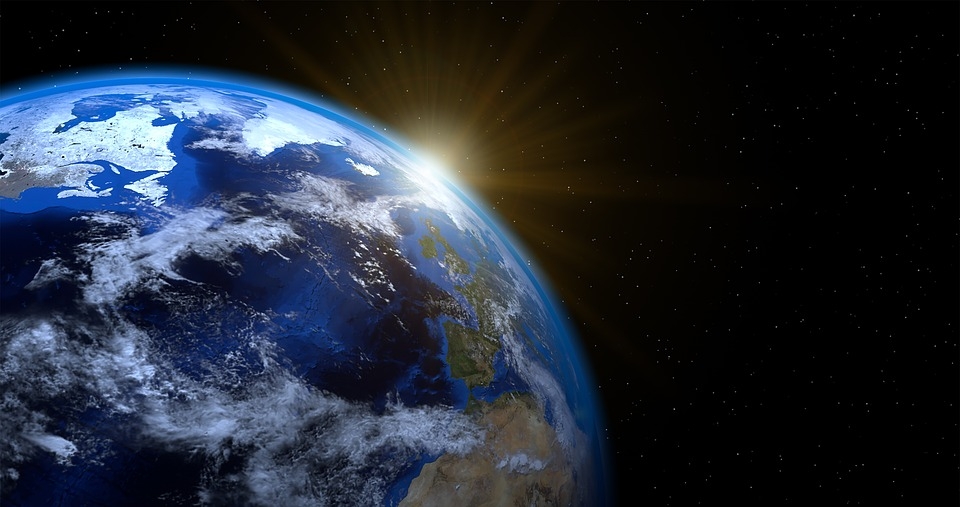Several asteroids will be passing by Earth this week, with some of them already whizzing through yesterday. The space rocks have been named 2019 TU, 2019 TW1, 2019 RK, 2019 TC1, 2019 SB6, 2019 TS, and 2019 TM.
Among the seven, 2019 TM is the largest, boasting a size of 63 meters (206 feet). The asteroid has already passed us, so there’s no need to worry.
But if it did, it could’ve caused significant damage if it connected with a major city. Asteroids that are smaller than 25 meters (82 feet) are considered harmless due to it likely crumbling as it enters the Earth’s atmosphere, Express reported.
Asteroid Apophis slated to make a show a decade from now
With 2019 TM the size of the Pyramid of Giza, it’s understandable that experts breathed a sigh of relief after the asteroid whizzed pass on Tuesday morning. The rest of its kin will be following suit this Saturday and Sunday.
While these space rocks will provide some entertainment for those who have a penchant for watching them fly by, April 13, 2029, is actually the most anticipated date for enthusiasts as an enormous asteroid will be visiting Earth at that time. Named after the God of Chaos, Apophis, the asteroid will be flying so close to Earth that billions of people will be able to see it with the naked eye, Metro reported.
Apophis’ size is estimated to be around 340 meters (1,115 feet) and will be passing Earth at a distance of 19,000 miles. While this may sound far, it’s actually really close in cosmic terms. Asteroids like this are rare to pass by Earth and even rarer still to be whizzing by that close.
An asteroid twice the size of 2019 TM
One such monstrosity will be approaching the planet in Dec. 14, 2113. Dubbed 1929 XB, the asteroid has a diameter of 700 meters (2296 feet) and will not be hitting Earth according to the calculations of experts. However, its trajectory could change as it will be passing through keyholes, regions in space where the gravitational pull of planets can nudge it our way.
Suffice to say that such asteroid will cause massive devastation to the planet if it hits a city like New York, potentially killing millions of people and injuring countless more. NASA already has plans laid out to counter such a threat, using nuclear weapons to deal with the space rock, although it’s not full-proof.



 Orbital resonance − the striking gravitational dance done by planets with aligning orbits
Orbital resonance − the striking gravitational dance done by planets with aligning orbits  Spacesuits need a major upgrade for the next phase of exploration
Spacesuits need a major upgrade for the next phase of exploration  The mystery of consciousness shows there may be a limit to what science alone can achieve
The mystery of consciousness shows there may be a limit to what science alone can achieve  The rising flood of space junk is a risk to us on Earth – and governments are on the hook
The rising flood of space junk is a risk to us on Earth – and governments are on the hook  Alpha, beta, theta: what are brain states and brain waves? And can we control them?
Alpha, beta, theta: what are brain states and brain waves? And can we control them?  How do airplanes fly? An aerospace engineer explains the physics of flight
How do airplanes fly? An aerospace engineer explains the physics of flight  Six space missions to look forward to in 2024
Six space missions to look forward to in 2024  Tatahouine: 'Star Wars meteorite' sheds light on the early Solar System
Tatahouine: 'Star Wars meteorite' sheds light on the early Solar System  Dark energy is one of the biggest puzzles in science and we're now a step closer to understanding it
Dark energy is one of the biggest puzzles in science and we're now a step closer to understanding it  The brightest object in the universe is a black hole that eats a star a day
The brightest object in the universe is a black hole that eats a star a day  A Nasa rover has reached a promising place to search for fossilised life on Mars
A Nasa rover has reached a promising place to search for fossilised life on Mars  If life exists on Jupiter’s moon Europa, scientists might soon be able to detect it
If life exists on Jupiter’s moon Europa, scientists might soon be able to detect it  Archeoastronomy uses the rare times and places of previous total solar eclipses to help us measure history
Archeoastronomy uses the rare times and places of previous total solar eclipses to help us measure history  Why some people don't trust science – and how to change their minds
Why some people don't trust science – and how to change their minds  Genetic diseases: How scientists are working to make DNA repair (almost) a piece of cake
Genetic diseases: How scientists are working to make DNA repair (almost) a piece of cake  Why now is the time to address humanity’s impact on the moon
Why now is the time to address humanity’s impact on the moon 































